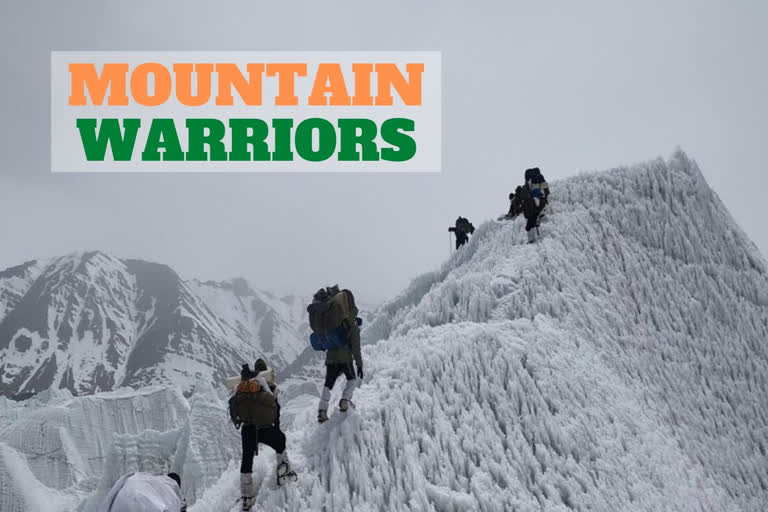Hyderabad: The recent violent military face-off in Ladakh's Galwan valley, in which 20 Indian soldiers were martyred, once again reminded people about the extreme grit and determination troops show in protecting the nation's borders at high altitudes.
India's rich history in mountain warfare goes back to the time before independence, as the Red Eagle Division (Now 4 Infantry Division), made a formidable reputation for itself in the mountains of Eritrea in March 1941, where it defeated hugely superior Italian forces at Keren. The division had even greater success when it took part in the Italian campaign against strongly entrenched German forces during World War II.
Presently, Siachen Glacier, the world's highest battlefield, is the perfect example of the Indian Army's prowess at high altitudes. The army has set up hundreds of outposts at the Siachen area at an altitude of over 5,000 metres. Around 6,000 to 7,000 troops are stationed in the area, with the highest post at an altitude of 6,749 metres.
Setting up of Mountain Divisions
After the 1962 debacle, large-scale reorganisation and expansions took place within the Indian Army to strengthen our borders. The Ski School at Gulmarg was upgraded to the High Altitude Warfare school, and Mountain Divisions was raised which were equipped and trained for operations in high altitude areas. Defensive tactics were evolved and our positions along the LAC greatly strengthened.
Currently, the Indian Army is the largest mountain fighting force across the world with more than 2,00,000 troops in 12 divisions.
Read:Army Chief on visit to forward locations in Eastern Ladakh, to interact with troops
"At present, the world's largest and experienced country with plateau and mountain troops is neither the US, Russia, nor any European powerhouse, but India," Chinese expert Huang Guozhi, senior editor of the Modern Weaponry magazine, had heaped praises on the Indian Army.
